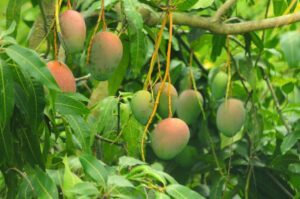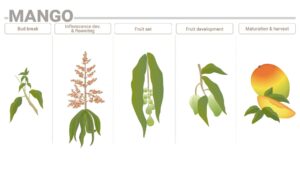An experiment with mango (Mangifera indica L.) cv. Tommy Atkins was carried out in Livramento de Nossa Senhora, Bahia state, Brazil. The objective was to evaluate the flowering, number of fruits produced and the yield of mango fruits. The plants were about six years old and planted with 10 x 10 m spacing. The plants were sprayed three times with 3% potassium nitrate at different timing intervals: one, three, five, seven, nine days of interval (and an untreated control). All plots treated with potassium nitrate produced a statistically significantly higher number of fruits per plant (ranging from 550 to 700 fruits) compared to the control (about 200 fruits). However, no significant differences among the different time intervals for the KNO3 treated plants were observed. The yield of mango plants treated with foliar KNO3 was increased due to the increase in number of fruits, as no statistical differences in average fruit weight were observed. Three applications with 3% potassium nitrate increased mango yield, and consequently grower’s net income and profitability (Table 1).
Table 1. Yield and economic analysis related to the foliar application of potassium nitrate in mango.



